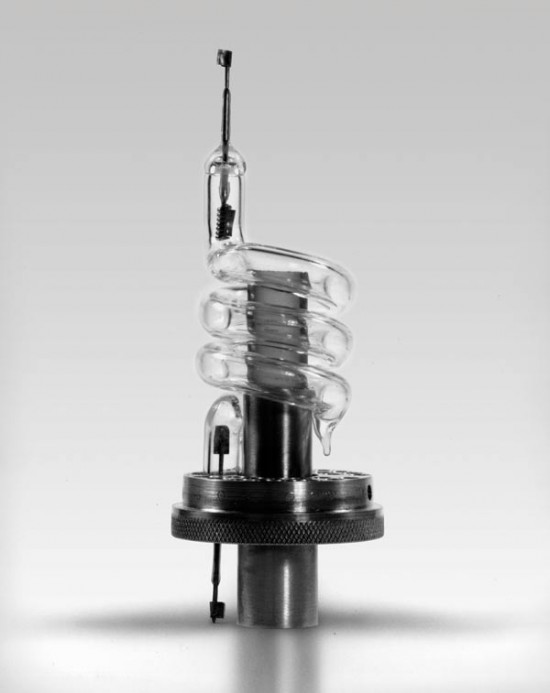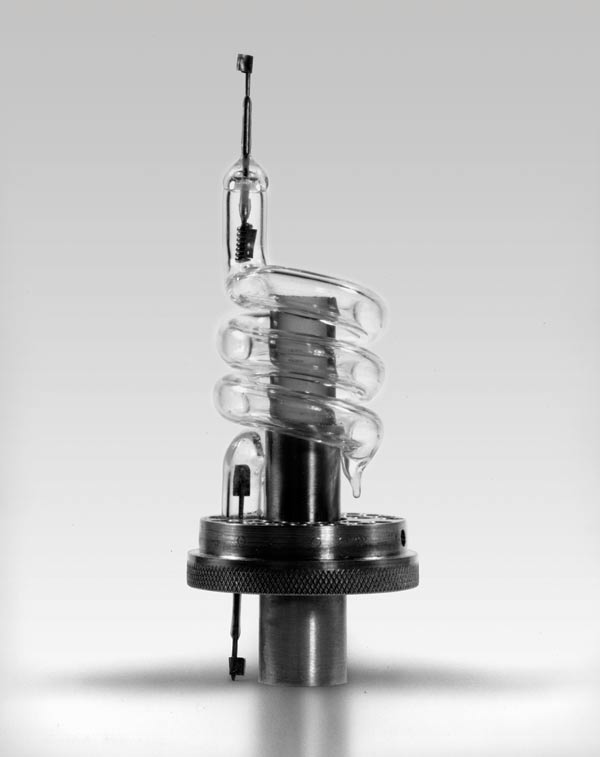Intelligent Machines
Year of the Laser
The laser, a device used in everything from astrophysics to biology, was invented 50 years ago.

This year is the 50th anniversary of the laser, a device used in applications from performing precise surgical procedures to measuring gravitational waves. In 1917, Albert Einstein proposed that a photon hitting an atom in a high energy state would cause the atom to release a second photon identical in frequency and direction to the first. In the 1950s, scientists searched for a way to achieve this stimulated emission and amplify it so that a group of excited atoms would release photons in a chain reaction. In 1959, American physicist Gordon Gould publicly used the term “light amplification by stimulated emission of radiation” for the first time. A year later, scientists demonstrated the first working optical laser.
The first laser, demonstrated by Theodore Maiman at the Hughes Research Laboratories, was a ruby crystal rod with mirrored ends, resting in the center of a coiled quartz flash tube. The tube lamp flashed an intense white light, which energized chromium atoms in the ruby. As the atoms lost energy, released photons bounced between the mirrors, stimulating more atoms, before finally escaping out of one end of the rod in short pulses of red light.
The first laser, demonstrated by Theodore Maiman at the Hughes Research Laboratories, was a ruby crystal rod with mirrored ends, resting in the center of a coiled quartz flash tube. The tube lamp flashed an intense white light, which energized chromium atoms in the ruby. As the atoms lost energy, released photons bounced between the mirrors, stimulating more atoms, before finally escaping out of one end of the rod in short pulses of red light.
